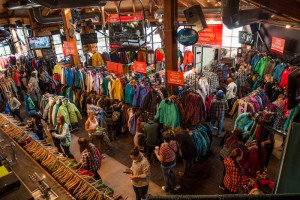Nicholas Everett wrote a blog about pet rocks. I’m writing one about a video with a man doing the splits in between two huge trucks. What could possibly be the connection?
Although it may not seem like there is much of a connection, Nick said “the most absurd and ridiculous ideas become successful in the business world” – A very strong statement that can completely relate the two. For Volvo, their commercial trying to emphasize the directional stability of Volvo Dynamic Steering it self is very absurd and out there. I’m sure that when first pitched, just as the pet rock, nobody thought of these ideas as “professional” or effective means of developing products and advertising. But it is exactly these crazy ends of ideas that create huge bursts of media attention on the businesses. Already, the commercial is being claimed as one of the best of the year. Without even explicitly stating the practicality of their product, Volvo is able to catch the eye of any watcher that is still able to understand its significance. So, you don’t have to be entrepreneuring Elon Musk’s Hyperloop to become a successful business developer, sometimes the best thing to do is go with the short, crazy, and completely out there proposal.







Recent Comments